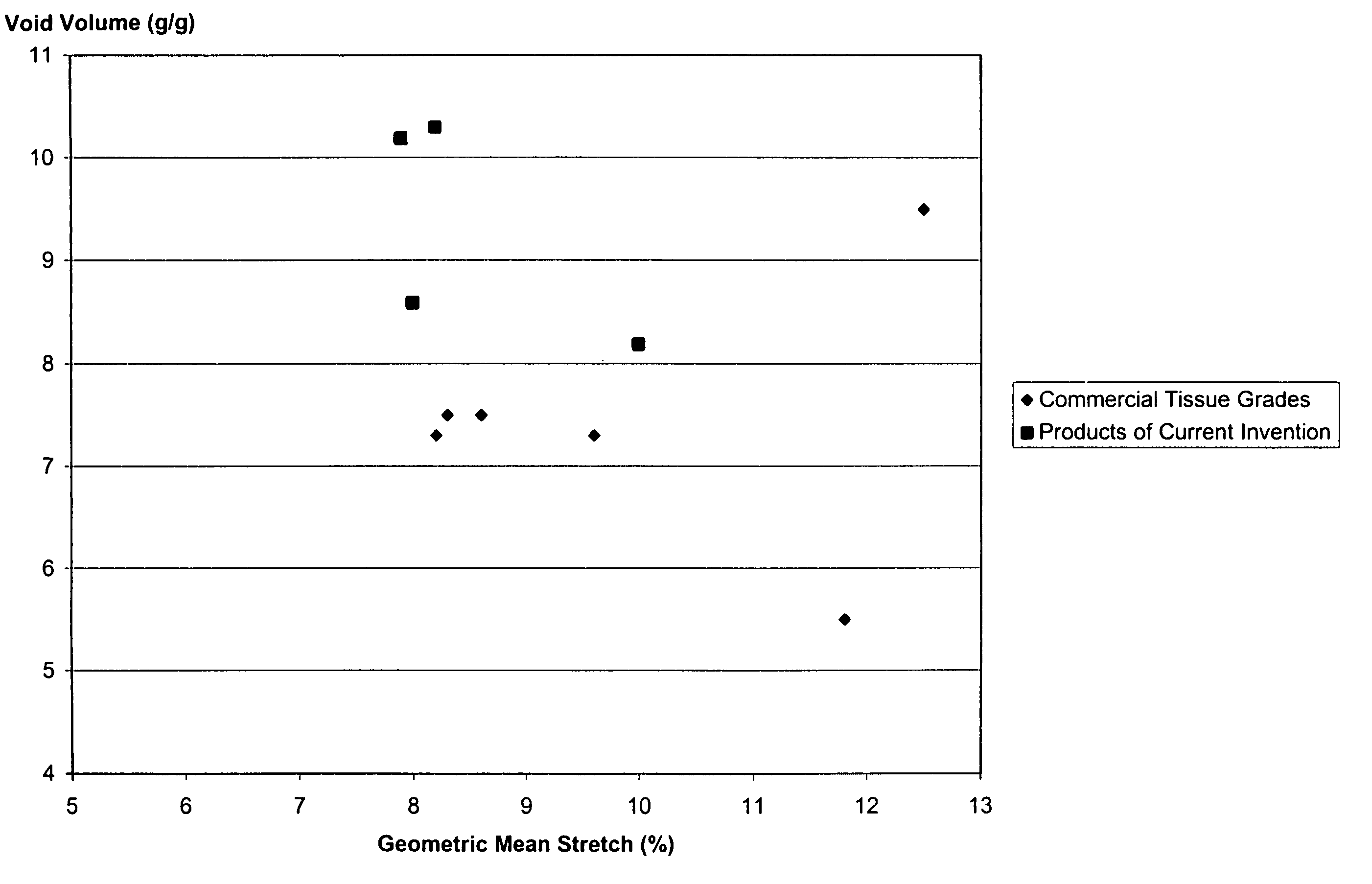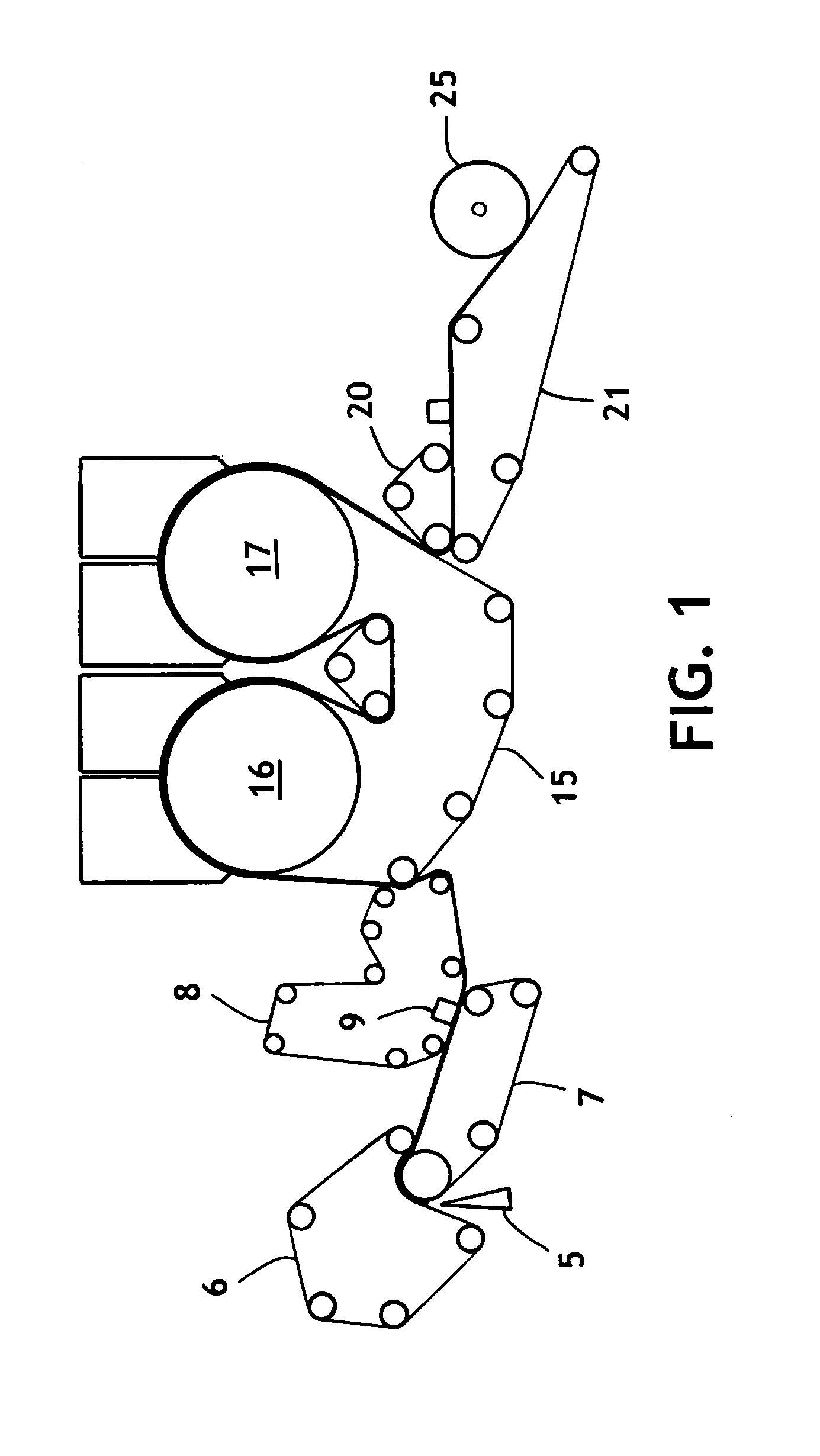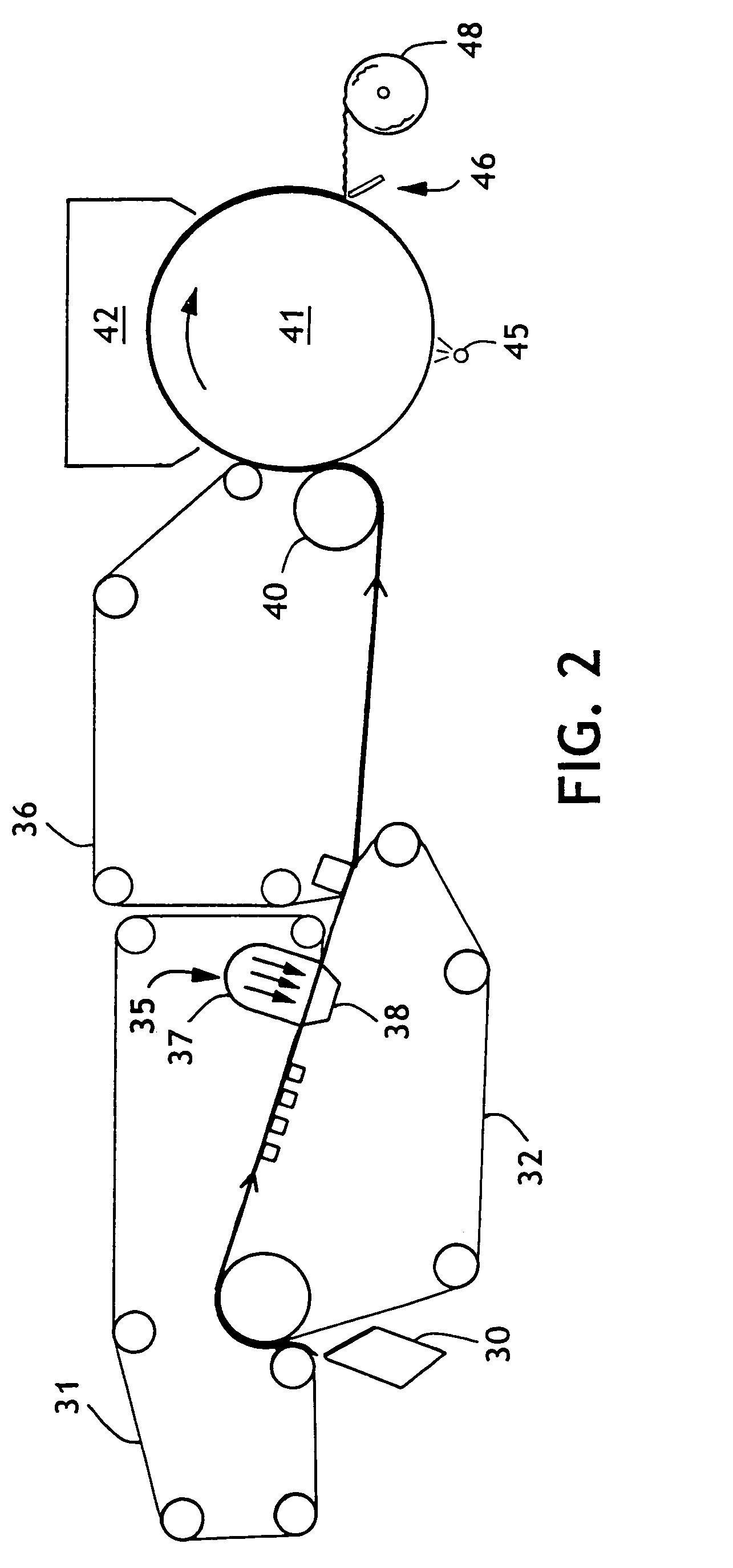Thin, soft bath tissue having a bulky feel
a soft bath tissue and feel technology, applied in non-fibrous pulp addition, instruments, other domestic articles, etc., can solve the problems of limited number of sheets that can be wound on a roll of bath tissue, roll that is too large in diameter to fit within the average bath tissue dispenser, and achieves low bulk, low caliper, and high sheet count
- Summary
- Abstract
- Description
- Claims
- Application Information
AI Technical Summary
Benefits of technology
Problems solved by technology
Method used
Image
Examples
example 1
Uncreped Throughdried Tissue
[0020]A three-layered tissue in accordance with this invention was made as described in FIG. 1. The furnish for the two outer layers consisted of 100% eucalyptus fibers which had previously been treated with a softening agent. In particular, the eucalyptus fibers were dispersed in a hydrapulper and, after pulping, the slurried furnish was transferred to a stock chest and treated with a bonding agent, Parez 631-NC which is commercially available from Cytec Industries, Inc., at a dosage of 1 kg / tonne under good mixing. After allowing the slurry to mix for 20 minutes, an imidazoline softening agent, C-6092 from Witco Corp., was added at a dosage of 7.5 kg / tonne of active chemical per metric ton of fiber, also under good mixing conditions. After an additional 20 minutes of mixing time, the slurry was de-watered using a belt press to approximately 32% consistency. Because this particular chemical addition method removes most non-retained softening agent from t...
example 2
Uncreped Throughdried Tissue
[0023]A tissue was made as described in Example 1, except the tissue was sent through a single nip calender stage with 30 pounds per lineal inch sustainable nip pressure. The resulting tissue product had a geometric mean stretch of 10.0%, a one-sheet caliper of 0.0091 inch and a Void Volume of 8.2 grams per gram.
example 3
Modified Wet-Pressed Tissue
[0024]A three-layered tissue in accordance with this invention was prepared as described in FIG. 2. The papermaking fibers were pretreated as described in Example 1. More specifically, the papermaking fibers were dispersed in a hydrapulper separately at 3.5% consistency for 20 minutes. Once in separate dump chests, the NSWK and eucalyptus pulps were diluted to approximately 2.0% consistency. Each pulp slurry was then pumped to separate machine chests. From the machine chests, the two pulps were blended together such that the resulting fiber split was 70% NSWK / 30% eucalyptus. A bonding agent, Redi-bond 5330A (National Starch and Chemical Company), was added to the pulp stream feeding the center layer at a rate of 6.2 kg / tonne for strength control. The pulp blend was subsequently diluted to 0.05–0.06% consistency prior to forming.
[0025]A three-layered headbox was used to inject the slurry between two Lindsay Wire 2164B forming fabrics, in a twin-wire forming...
PUM
| Property | Measurement | Unit |
|---|---|---|
| diameter | aaaaa | aaaaa |
| total length | aaaaa | aaaaa |
| pressure | aaaaa | aaaaa |
Abstract
Description
Claims
Application Information
 Login to View More
Login to View More - R&D
- Intellectual Property
- Life Sciences
- Materials
- Tech Scout
- Unparalleled Data Quality
- Higher Quality Content
- 60% Fewer Hallucinations
Browse by: Latest US Patents, China's latest patents, Technical Efficacy Thesaurus, Application Domain, Technology Topic, Popular Technical Reports.
© 2025 PatSnap. All rights reserved.Legal|Privacy policy|Modern Slavery Act Transparency Statement|Sitemap|About US| Contact US: help@patsnap.com



